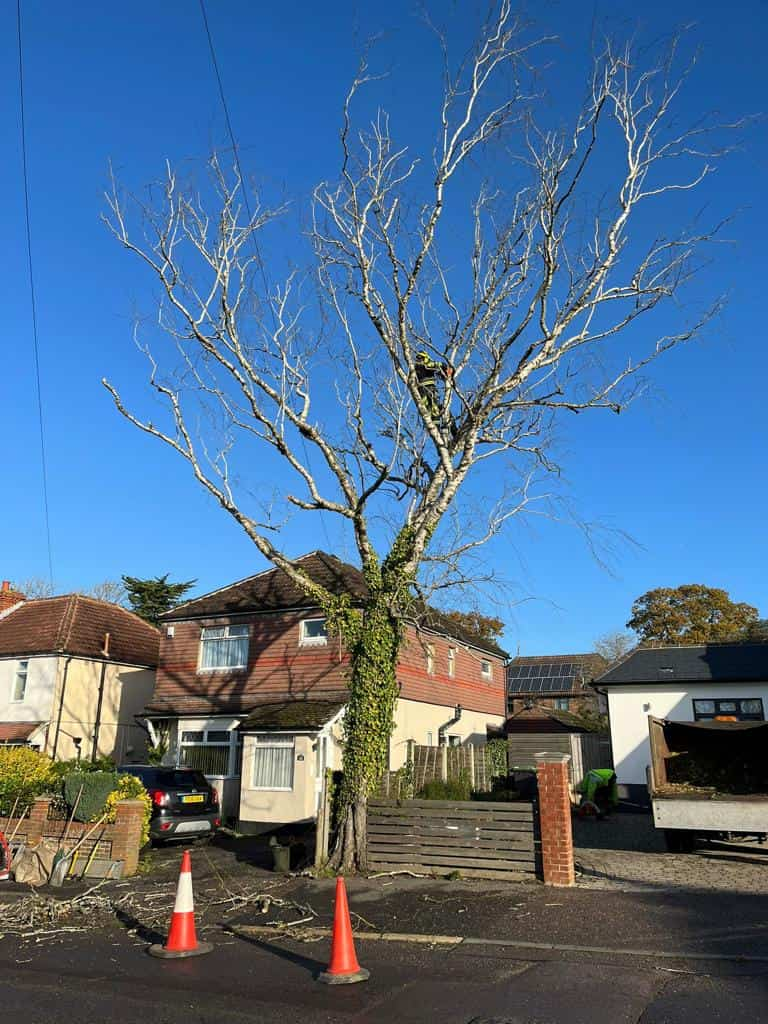Introduction
Tree surgery is an essential aspect of arboriculture, ensuring that trees remain healthy, safe, and aesthetically pleasing. However, many misconceptions exist around the practice, leading some property owners to neglect necessary tree care or misunderstand its importance.
In Quedgeley, Gloucestershire, professional tree surgeons provide expert care to maintain trees while ensuring safety for homes, businesses, and public spaces. Understanding the truth about tree surgery can help property owners make informed decisions about their trees and landscapes.
Common Myths About Tree Surgery
1. Myth: Tree Surgery Is Only for Dead or Dying Trees
Fact: While tree surgeons do handle tree removals, their role extends far beyond cutting down dead trees. Tree surgery includes:
- Pruning to promote healthy growth
- Crown thinning to reduce wind resistance
- Stump grinding to clear space for new planting
- Tree inspections to assess disease or structural issues
Regular maintenance can prevent trees from becoming hazardous or diseased, reducing the need for emergency removals.
2. Myth: Trees Can Be Cut Back at Any Time of Year
Fact: The timing of pruning and tree surgery is crucial to a tree’s health. While some species can be pruned year-round, others should only be trimmed during specific seasons to avoid stress or disease.
- Winter pruning is often best for deciduous trees, promoting healthy spring growth.
- Summer pruning can help control fast-growing species and improve tree shape.
- Avoid cutting during active growth periods unless necessary, as this can weaken the tree.
Consulting a tree surgeon ensures the correct timing for each species.
3. Myth: Tree Surgery Damages the Environment
Fact: Professional tree surgery actually benefits the environment by maintaining tree health, preventing the spread of disease, and ensuring trees remain structurally sound. Ethical tree surgeons prioritise conservation and only remove trees when absolutely necessary.
Tree care practices such as deadwood removal and controlled pruning contribute to the longevity of trees, allowing them to continue providing essential benefits such as oxygen production, shade, and wildlife habitat.
4. Myth: Tree Surgery Is Just About Cutting Branches
Fact: Tree surgery involves a range of specialist techniques beyond basic pruning. It requires in-depth knowledge of tree biology, disease management, and structural stability. Tree surgeons perform:
- Crown reduction to control growth without harming the tree
- Pollarding for species that require controlled pruning
- Bracing to support weak limbs and prevent breakage
- Tree preservation in conservation areas where work must be carefully managed
Trained professionals use precise methods to ensure minimal stress on the tree while achieving the desired results.
Why Tree Surgery Is Essential
1. Enhancing Tree Health and Longevity
Trees, like all living organisms, require care to remain strong and disease-free. Regular inspections and pruning help:
- Remove dead or infected branches
- Improve airflow and sunlight penetration
- Encourage healthy new growth
Without intervention, trees can become overgrown, weak, or vulnerable to disease, shortening their lifespan.
2. Preventing Hazards and Property Damage
Overgrown or weakened trees can pose serious risks, particularly in urban areas. Common hazards include:
- Falling branches damaging roofs, vehicles, or power lines
- Tree roots undermining foundations or driveways
- Instability during high winds or storms
A qualified tree surgeon can assess and mitigate risks, ensuring that trees do not pose a danger to people or property.
3. Compliance with Legal Requirements
In many areas, trees are protected by Tree Preservation Orders (TPOs) or conservation area regulations. Attempting to prune or remove a tree without the correct permissions can result in legal consequences.
Tree surgeons are familiar with local regulations and can obtain the necessary approvals before carrying out work, ensuring compliance with environmental laws.
4. Aesthetic and Landscaping Benefits
Well-maintained trees enhance the appearance of a property, providing structure, shade, and visual appeal. Professional tree care ensures that trees:
- Grow in a balanced and controlled manner
- Do not obstruct views or pathways
- Complement surrounding landscaping features
Tree surgery is essential for keeping gardens and outdoor spaces looking their best while maintaining safety.
When to Call a Tree Surgeon
If you notice any of the following, it’s time to seek professional advice:
- Dead, dying, or diseased branches
- Leaning trees or exposed roots
- Cracks or cavities in the trunk
- Overhanging branches posing a risk to buildings or roads
- Excessive moss, fungi, or insect activity on the tree
Early intervention can prevent minor issues from escalating into major problems, saving time and money in the long run.
Conclusion
Tree surgery is an essential service that promotes tree health, enhances safety, and contributes to the overall aesthetics of landscapes. By dispelling common myths and understanding the true value of tree care, property owners can make informed decisions about maintaining their trees.
For residents in Quedgeley, Gloucestershire, professional tree surgery ensures that trees remain safe, healthy, and an asset to their surroundings. Seeking expert advice and regular maintenance will help extend the life of trees and protect both people and property.
Call us on: 01452 941 558
Click here to find out more about EM Tree Surgery Quedgeley
Click here to complete our contact form and see how we can help with your trees needs.

